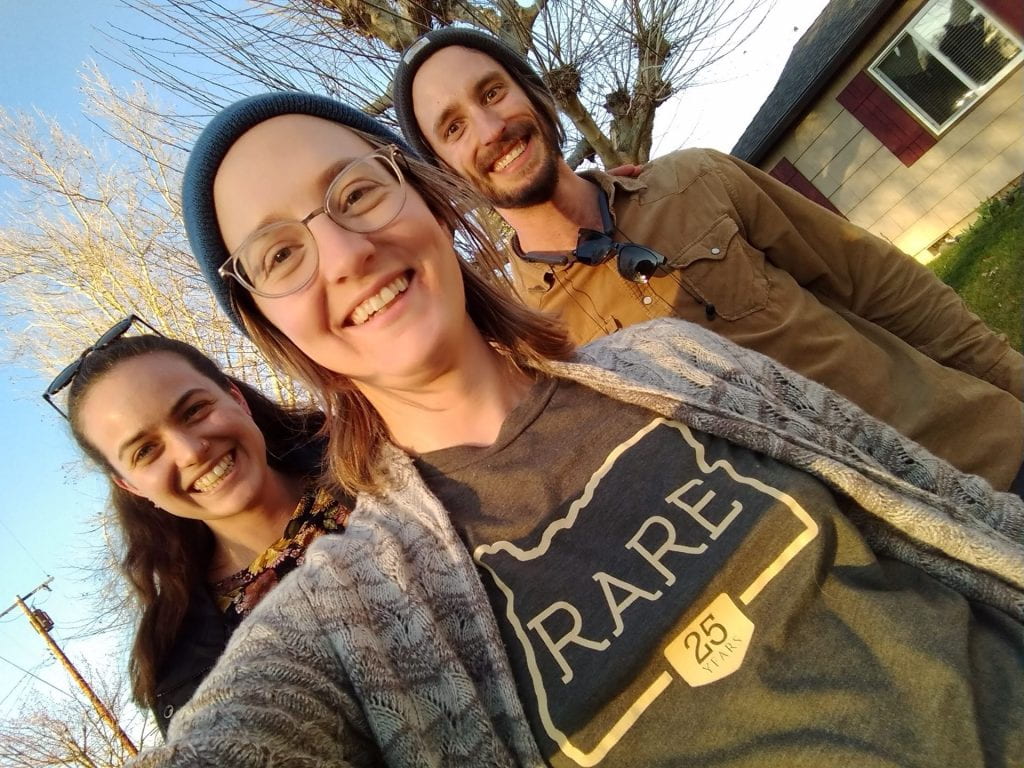By Molly Murai, Main Street Coordinator, Cottage Grove Main Street
The most rewarding accomplishment is seeing the community’s support and involvement in my projects. I have seen positive responses for the hanging basket project, which benefits the beautification of downtown. The hanging baskets are not a Main Street project, but my responsibility is to help support the watering service and basket purchases. Despite being in a pandemic where people are experiencing their own challenges, they still donate to this project. I have received a higher amount in donations than in previous years, which makes me have faith in humankind. People are willing to help because they care about their community in Cottage Grove; they are passionate and want to see the best for their little town. By donating, they are creating awareness for this vital cause. I have also seen this compassion on social media platforms, like Facebook. People have offered food assistance, help with grocery shopping or mask distribution. People in Cottage Grove genuinely care for each other. Within this group of people who support each other, I would often see local government officials, like the Mayor of Cottage Grove, the City Manager, or City Councilors at community events like the Cottage Grove Art Walk or my seasonal events. I also see business owners in other business’ establishments. It’s nice seeing people I work with who also make the City’s decisions show up for the community. I receive a tremendous amount of support from my Board members who also serve on other boards, attend my events. Through their connections, they create awareness for the Main Street Program and demonstrate their commitment by making time and effort to be there.
From my position, I have learned the importance of supporting local and the domino effect it has. Before this position, I was a huge supporter of the more prominent franchises like Safeway, Target, or Costco. And although those stores have their benefits like Costco selling in bulk, the locally owned grocery stores like Bi-Mart or Grocery Outlet are just as substantial. When Walmart entered the economy in Cottage Grove, the company drove out many small, locally owned businesses. Walmart became customers’ one-stop-shop, which closed smaller and specific stores like pharmacies, jewelry, clothing, etc. It has been very refreshing to visit the historic districts’ businesses because I see the owners in their stores almost every day. I can count on them to be there on days that I go there. I have noticed a greater feeling when you purchase an item from the store owner who may have created that item, or served by the restaurant owner. I am now passionate about sourcing products locally and buying in-store rather than from on line sites, like Amazon. Some people prefer one-stop-shops instead of going to multiple stores to save time. Although I understand this concept, it may be hurting the small businesses more than people think.
A business owner has taught me about the definition of “local.” As Cottage Grove already has limited resources, the term must be used correctly. I made a mistake in an email about the t-shirt company being local, when it wasn’t our actual Cottage Grove company, but a company based out of Happy Valley, Oregon. As a resident from Hawaii, I use the term as statewide because the state is so small that we are proud if something is made in the state. Due to there being so many towns in Oregon, the term is used within the city. Using the city also applies to money. Money must stay in Cottage Grove, distributed, and should go directly back to the area.
 About the author, Molly Murai: As the Main Street Coordinator, Molly works with the Main Street Board of Directors and local business owners to build sustainable growth within the Cottage Grove Main Street Program. Molly is responsible for organizing fun and engaging community events that help foster local businesses and boosts economic development in the historic downtown district. Molly serves as a liaison between the business owners and the City and helps them improve community engagement and economic development in Cottage Grove.
About the author, Molly Murai: As the Main Street Coordinator, Molly works with the Main Street Board of Directors and local business owners to build sustainable growth within the Cottage Grove Main Street Program. Molly is responsible for organizing fun and engaging community events that help foster local businesses and boosts economic development in the historic downtown district. Molly serves as a liaison between the business owners and the City and helps them improve community engagement and economic development in Cottage Grove.


